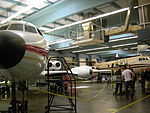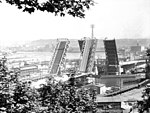Seattle Chinese Garden
1990s establishments in Washington (state)Chinese-American culture in SeattleChinese gardensGardens in Washington (state)Parks in Seattle ... and 1 more
West Seattle, Seattle

The Seattle Chinese Garden (Chinese: 西華園; pinyin: Xī Huáyuán; Jyutping: Sai1 Waa4jyun4; lit. 'West Chinese garden') is located on 4.6 acres (1.9 hectares) at the north end of the South Seattle Community College campus at 6000 16th Avenue SW, in West Seattle. The site has a panoramic view of downtown Seattle, Washington, Elliott Bay and the Cascade Mountains, including Mt. Baker and Mt. Rainier. The first portion of the garden opened in the early 1990s.
Excerpt from the Wikipedia article Seattle Chinese Garden (License: CC BY-SA 3.0, Authors, Images).Seattle Chinese Garden
16th Avenue Southwest, Seattle Delridge
Geographical coordinates (GPS) Address Phone number Website Nearby Places Show on map
Geographical coordinates (GPS)
| Latitude | Longitude |
|---|---|
| N 47.551388888889 ° | E -122.35416666667 ° |
Address
South Seattle College
16th Avenue Southwest 6000
98106 Seattle, Delridge
Washington, United States
Open on Google Maps







